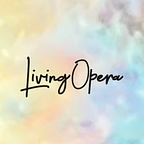New Year’s resolution for NFTs in 2022
If 2021 was the year that NFTs and crypto hit social media, 2022 is the year of the reckoning: value-enhancing NFTs.
While blockchain, ranging from the general-purpose technology of smart contracts to Bitcoin for payments, has been around for years, 2021 was largely the year of NFTs and crypto — millions of people heard the terms for the first time, as evident by Google Trends. But, what does the year 2022 hold?
One hypothesis is that 2022 will be the year of value-enhancing NFTs. However, let’s first delve into the details behind 2021.
Bubbles and Speculation
Assets are priced according to their expected (and discounted) future value of cashflow. But, for many assets, it’s hard for people to converge on the future value. It’s not just fine art that experiences bubbles — plenty of other asset markets do too. Just remember the 2007–08 financial crisis.
Back in 2007, many developed countries entered into a deep recession driven by a deterioration in the balance sheets of banks, largely a function of the residential market. House prices were expected to continue rising, but eventually the optimism about future growth wasn’t matching reality: too many people were living beyond their means in homes they could not afford.
We can argue about the origins of the financial crisis — and many have and continue to do so. How much of the rise in housing prices was driven by investor speculation versus federal incentives that led to an expansion of housing portfolios and securitization, or the process of lumping different assets of varying quality together into new packages, is still hotly debated.
But, what everyone can agree on is that housing prices were driven up by speculative forecasts that couldn’t be sustained.
In this sense, attacks against NFTs as speculative is not unique to them; every asset is susceptible to bubbles — look no further than the housing market.
Attacks against NFTs as speculative is not unique to them; every asset is susceptible to bubbles — look no further than the housing market.
Making NFTs Value-enhancing
We’re either in a bubble in the NFT market, or we’re about to be in one. (Frankly, I think there are many seriously overpriced NFTs, but we have not had the reckoning yet since there’s still so much enthusiasm in the market.)
Because COVID-19 and the associated quarantine and lock down policies shifted so much activity online, the concept of digital assets and their business case became much more attractive than they were pre-2020. People — and perhaps rightly so — were so excited by the possibilities of making and trading digital art that it bid up demand, in turn driving up prices and attracting even more artists to NFT marketplaces to sell their work.
But, that cannot continue indefinitely. At the end of the day, NFTs have to produce some sort of value, which falls into one of two categories.
1. Consumption-based NFTs
These NFTs are for consumption purposes, meaning that they are enjoyable on their own. That can span the gamut: beautiful art, a rare or highly prized certificate of ownership, and/or even a game.
2. Productivity-based NFTs
These NFTs solve a tangible need in the marketplace. While these are a lot less common than art NFTs, they have even more potential. As I’ve written about before, NFTs are fundamentally about signaling and proving ownership of content on a transparent and immutable digital ledger.
NFTs are fundamentally about signaling and proving ownership of content on a transparent and immutable digital ledger.
In that sense, they’re perfect for replacing the traditional patent and copyright system. Even though that might seem preposterous now, the United States Patent and Trademark Office (USPTO) has already reported that they were “experiencing a huge surge in trademark application filings, which has resulted in a significant increase in unexamined application inventory.” Put simply, the current patent and trademark infrastructure is not setup to support a Web3 world, but NFTs are highly scalable and transparent.
That’s just one example — clearly, many more applications of NFTs will emerge. (Frankly, one that I’m particularly excited about is in education: they provide an important vehicle for linking performance with compensation.)
What to Look for in 2022
Even though many people have made money in 2021 by buying NFTs that have a lot of buzz around them, that is unlikely to continue to 2022. The market simply cannot sustain such high growth, particularly if the composition of NFT buyers does not diversify rapidly enough.
The best way to avoid getting caught with under water assets, much like many home owners were caught during the 2007–08 financial crisis, is to buy NFTs that you actually believe in and think are providing value. If you do, it’s likely that there are others — or, at the very least, that you can hold onto the NFT until the market swings back and you can sell it for higher than you paid.
Look for value in 2022.
This article was written by Christos A. Makridis, the Chief Technology Officer and Head of Research at Living Opera. He is also a research affiliate at Stanford University’s Digital Economy Lab and Columbia Business School’s Chazen Institute, and holds dual doctorates in economics and management science & engineering from Stanford University.
